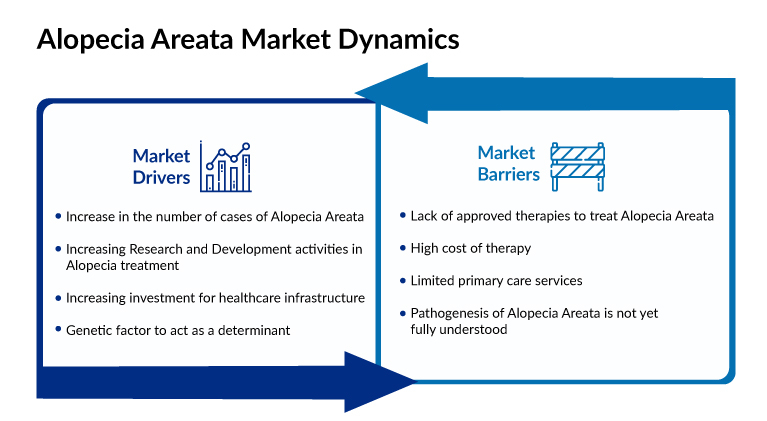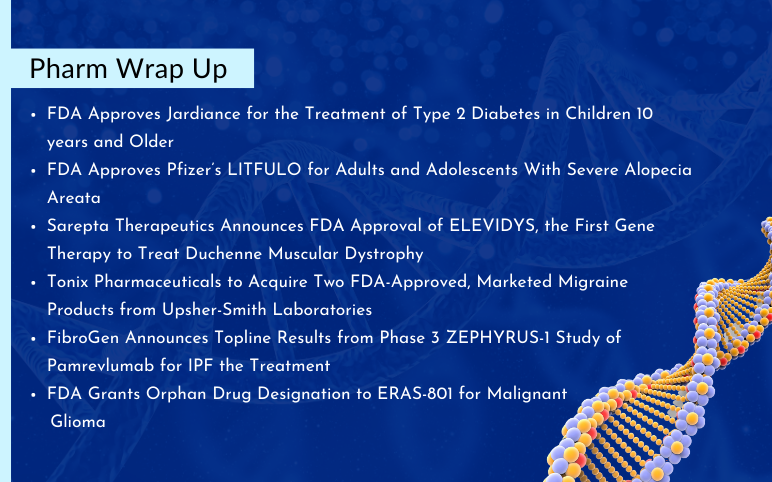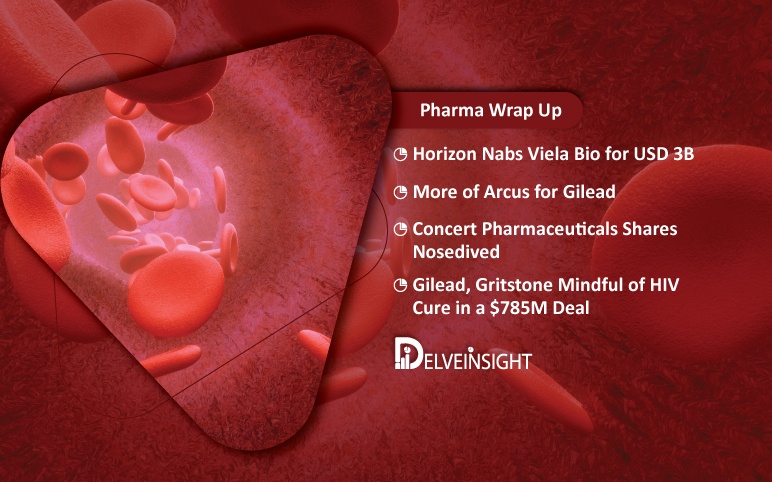Alopecia Areata Treatment: Which Pipeline Therapy Will Steal the Spotlight?
Sep 09, 2022
Table of Contents
Currently, there is no cure and no FDA-approved treatments for alopecia. Thus, the alopecia areata treatment market is completely dominated by off-label drug therapies. Depending on the extent of hair loss and age, there are a variety of alopecia areata treatment options are available. The main goal of treatment is to block the immune system attack or stimulate the regrowth of hair. This can be effective, especially for people with milder forms of the disease.
Moreover, approximately 700,000 people in the United States are diagnosed or affected by the alopecia areata, with just under half of these patients estimated to have complete scalp or total body baldness. This makes alopecia areata the second most common type of hair loss in the US, just behind pattern baldness or a receding hairline.
Downloads
Click Here To Get the Article in PDF
Recent Articles
- JAK Inhibitors: New Lifeline for Hair Loss Treatment
- Moderna’s COVID-19 vaccine; AcelRx buys TetraPhase; Breakthrough designation to Baricitinib
- FDA Approves Jardiance for Type 2 Diabetes; FDA Approves Pfizer’s LITFULO for Alopecia Areata; Sa...
- HCQ/ CQ failure; AZ/ Catalent’s deal; Sinovac’s CoronaVac and Lilly’s Olumiant trial results
- Horizon, Viela Deal; Concert Schizo Drug Flop; Gilead Deals with Arcus and Gritstone
Despite decreasing trends observed in the global burden of alopecia areata, low-income countries and Western Sub-Saharan Africa regions continue to exhibit rising incidence and disability-adjusted life-years rates. Alopecia areata affects 2% of the general population and is a significant driver of psychological disorders such as depression, anxiety, and mental health distress.

FDA approves new systemic alopecia areata treatment
With the limited number of alopecia areata treatment options available, many individuals with alopecia areata turned to wigs and false eyelashes. People with alopecia areata faced significant challenges as the disease is very stigmatizing. On June 13, 2022, Food and Drug Administration approved OLUMIANT (baricitinib) oral tablets to treat adult patients with severe alopecia areata aims at treating an entire body rather than the specific area being developed by Eli Lilly and Company and Incyte Corporation. Before the approval of Olumiant, there were zero FDA-approved alopecia areata treatments. This approval is huge, both for people with alopecia areata and the clinicians who have been advocating for them. It gives many patients better access to alopecia areata medication that can help them get their hair back and improve their quality of life.
The recommended dose is OLUMIANT 2 mg/day, with an increase to 4 mg/day if treatment response is inadequate. For patients with nearly complete or complete scalp hair loss, with or without substantial eyelash or eyebrow hair loss, consider treating with 4 mg/day. Once an adequate response is achieved on 4 mg/day, the dosage is to be decreased to 2 mg/day. OLUMIANT is not recommended for use in combination with other JAK inhibitors, biologic immunomodulators, cyclosporine, or other potent immunosuppressants.
Eli Lilly and Company and Incyte Corporation, in May 2022, received a positive opinion for OLUMIANT (baricitinib) for the treatment of adults with severe alopecia areata from the European Medicines Agency’s (EMA) Committee for Medicinal Products for Human Use (CHMP).
The approval was based on Lilly’s BRAVE-AA1 and BRAVE-AA2 trials, the largest phase III alopecia areata clinical trial program, which evaluated the efficacy and safety of OLUMIANT in 1,200 adult patients with severe alopecia areata (≥50% scalp hair loss as defined by a Severity of Alopecia Tool (SALT) score ≥50). Across the studies at 36 weeks, 17-22% of patients taking OLUMIANT 2-mg/day and 32-35% of patients taking OLUMIANT 4-mg/day achieved 80% or more scalp hair coverage, compared to 3-5% taking placebo. Additionally, 11-13% of patients taking OLUMIANT 2-mg/day and 24-26% of patients taking OLUMIANT 4-mg/day achieved 90% or more hair coverage, compared to 1-4% of patients taking placebo; results for OLUMIANT 2-mg/day were not statistically significant under the multiplicity control plan for BRAVE-AA2.
Upcoming potential therapies for alopecia areata treatment
Several leading giants such as Concert Pharmaceutical, Suzhou Zelgen Biopharmaceuticals, Pfizer, Legacy Healthcare, AnaptysBio, Reistone Biopharma, Eli Lilly and Company, Incyte Corporation, Novartis, Bioniz, Rigel Pharmaceuticals, Arcutis Biotherapeutics, LEO Pharma, Arena Pharmaceuticals, HCW Biologics, and others are currently developing novel alopecia areata therapies to improve the treatment space. Currently, the alopecia areata pipeline looks promising with drug candidates including CTP-543, Jaktinib, Ritlecitinib, LH-8, ANB030, SHR0302, and others.

CTP-543 is an investigational oral selective inhibitor of Janus kinases JAK1 and JAK2. The FDA has granted CTP-543 Breakthrough Therapy designation for moderate to severe alopecia areata treatment in adult patients and Fast Track designation for alopecia areata treatment.
In August 2022, Concert Pharmaceuticals announced positive topline results from its second Phase III alopecia areata clinical trial, THRIVE-AA2, evaluating its oral investigational medicine CTP-543 in adult patients with moderate to severe alopecia areata, an autoimmune disorder that results in patchy or complete scalp hair loss. The primary efficacy endpoint for THRIVE-AA2 was the percentage of patients achieving an absolute Severity of Alopecia Tool (SALT) score of 20 or less at Week 24 of treatment, which was met with statistical significance in both the 8 mg twice-daily and 12 mg twice-daily dose groups relative to placebo. Alopecia areata treatment with CTP-543 was generally well tolerated.
With the successful completion of our two THRIVE-AA phase III alopecia areata clinical trials, Concert is now moving rapidly to prepare NDA for submission to the US FDA in the first half of 2023. The company is also continuing to advance commercial planning as it positions CTP-543 to potentially enter the marketplace for the large underserved population of patients with alopecia areata.
In August 2022, Pfizer’s alopecia areata drug Ritlecitinib was shown to be linked to a reduction in hair loss in early topline clinical data, setting the stage for a scrap with Eli Lilly and Incyte in the title fight for a potential blockbuster opportunity for alopecia areata treatment.
Ritlecitinib has met its primary endpoint in phase II/III alopecia areata clinical trials. The JAK3/TEC inhibitor update came months after Eli Lilly and Incyte reported late-phase success in alopecia. Pfizer’s Ritlecitinib joined Lilly and Incyte’s Olumiant on the list of drugs to hit the primary endpoint in pivotal alopecia areata clinical trials. Pfizer plans to combine the phase II/III data with results from an ongoing long-term study to file for approval of Ritlecitinib. Pfizer has identified Ritlecitinib as one of nine potential blockbusters it aims to launch by 2025. As Pfizer sees it, Ritlecitinib could rack up sales of more than USD 1 billion in alopecia alone. This alopecia areata drug is also in development in vitiligo, rheumatoid arthritis, ulcerative colitis, and Crohn’s disease.Rosnilimab is another promising alopecia areata treatment that is being developed by ANAPTYSBIO. It is an anti-PD-1 agonist therapeutic antibody undergoing an AZURE Phase II clinical trial in moderate-to-severe alopecia areata. The company anticipates top-line data in Q1 2023, which is being disclosed in its second quarter 2022 financial results.
Pipeline scenario for alopecia areata treatment (Late-stage therapies)
|
|
|
|
|
|
|
|
|
|
|
|
|
|
|
|
|
|
|
|
|
|
|
|
|
|
|
|
|
|
|
|
|
|
|
|
|
|
|
|
|
|
|
|
|
|
|
|
|
KOL Views
Today marks a milestone with the first-ever FDA-approved systemic treatment for Alopecia Areata patients, who face significant challenges every day including limited public knowledge about the disease, a lack of treatment options and social stigma, “9 said Nicole Friedland, president, and chief executive officer, National Alopecia Areata Foundation (NAAF). “The approval of OLUMIANT can spark hope for many patients and encourage new treatment conversations with their doctors. NAAF wants more choices for our patient community and with the approval of OLUMIANT, there are now new treatment expectations being established in Alopecia Areata care.
It is a new era of innovation for developing treatment options for patients with Alopecia Areata, many of whom often suffer physically and mentally with this challenging autoimmune disease,” said Maryanne Senna, MD, Director of the Lahey Hair Loss Clinic of Excellence and clinical investigator of THRIVE-AA2. “These results are very promising and suggest that CTP-543 has the potential to address important needs for people living with Alopecia Areata.
Changing alopecia areata treatment trajectory
Alopecia areata has been selected as one of eight new disease areas that it focused on under its Patient-Focused Drug Development Initiative (PFDDI) in 2016-2017 by US FDA. The goal of the PFDDI is to bring patient perspectives into an earlier stage of product development. Extensive alopecia areata posed a huge therapeutic challenge due to the lack of systemic therapeutics that was FDA-approved for the disease. At first, topical corticosteroids, tacrolimus, cryotherapy, minoxidil, anthralin, or ultraviolet light A combined with oral psoralens (PUVA) were used as the potential alopecia areata treatments, all of which had no robust evidence for their consistent efficacy in alopecia areata. In June 2022, the FDA approved the first oral alopecia areata medication, Olumiant, which blocks the activity of enzymes and the pathway that causes inflammation for alopecia. And more treatment options may be on the way, especially since the FDA cleared the path for a few alopecia areata treatments to get to market faster through its Breakthrough Therapy designation. This approval will help fulfill a significant unmet need for patients with severe alopecia areata.

Like many alopecia areata treatments, Olumiant is not without its drawbacks. There are several potential side effects, including GI perforations, respiratory infections, and muscle aches to name a few. These recent regulatory actions have brought attention to the hair loss space, which has ample demand for alopecia areata treatments, but relatively few unique assets in development. When the space is undergoing exciting changes, there is an increased interest in ongoing alopecia areata clinical trials to the potential of a new alopecia areata treatment paradigm. In the coming months, the alopecia areata treatment paradigm is expecting a jump in its treatment options, likely due to the entry of Janus Kinase (JAK) inhibitors. Many anti-programmed cell death protein 1 (PD-1) monoclonal antibodies which are potential cancer therapies, are also being investigated for alopecia areata treatment. These investigations are inspired by the use of off-label drugs that target the inflammatory pathway in alopecia areata patients, leading to clinical trials.
Coverage policies must ensure access to FDA-approved alopecia areata treatments
Expanding policymakers’ and payers’ view of alopecia areata is vital; thinking of alopecia areata as simply “hair loss” diminishes the suffering of many patients living with this disease and minimizes the importance of providing coverage for alopecia areata treatment. The FDA recognizes alopecia areata as a chronic autoimmune disease with a “debilitating emotional and psychological impact on patients which goes beyond the loss of hair.
Currently, a group of dermatologic conditions (acne, psoriasis, and rosacea) is specifically listed as non-cosmetic by the Centers for Medicare & Medicaid Services for Medicare Part D coverage. As a result, Medicare covers the FDA-approved alopecia areata treatments for these conditions. With several shared characteristics between alopecia areata and these noncosmetic, Medicare-covered dermatologic conditions, there is no question that future FDA-approved alopecia areata treatments should be covered by payers.
Future perspective in the alopecia areata treatment
Treatments for alopecia areata have evolved over the decades from broad and nonspecific alopecia areata therapies to those that are now more targeted and rationally selected. This was achieved using closusingon and communication between clinicians and basic scientists, which resulted in the elucidation and understanding of the unique pathophysiology of alopecia areata. Approval from the US Food and Drug Administration of Olumiant is a real milestone because no drug has been approved specifically for alopecia areata treatment. There are two other key oral JAK inhibitor players in alopecia areata: Pfizer’s ritlecitinib and Concert Pharmaceuticals’ CTP-543 (deuruxolitinib). AnaptysBio is offering a different mechanism in this space, as it is investigating its anti-PD-1 monoclonal antibody rosnilimab in a placebo-controlled Phase II trial. However, it has been postulated that there is the risk that the anti-PD1 mechanism may not apply to all patients, as JAK is a major pathway in comparison.
Moreover, it has been observed in alopecia areata clinical trials that the disease often comes back when people stop taking the drugs, and some people do not respond to JAK inhibition at all. So a permanent solution is required. One option might be to try to destroy the memory cells that replenish the T-cell population and lower T-cell activity with JAK inhibitors, but it might be possible to clear enough T cells to get rid of the disease altogether. The biggest challenge is going beyond just alopecia areata treatment, and for that, one therapy is not enough. The pathogenesis of alopecia areata is not yet fully understood, but recent investigations of the immune activation in alopecia areata skin reveal Th1/IFN-γ, as well as Th2, PDE4, IL-23, and IL-9 upregulations. Numerous novel therapeutics are undergoing clinical trials for alopecia areata treatment, emphasizing the potential transformation of the clinical practice of alopecia areata, which is currently lacking. In light of these recent developments, the therapeutic arena of alopecia areata treatments is finally getting more exciting. alopecia areata will join the lengthening list of dermatologic diseases with mechanism-targeted drugs, thus changing the face of alopecia areata treatment.

FAQs
Alopecia areata is a disease that happens when the immune system attacks hair follicles and causes hair loss. Hair follicles are the structures in the skin that form hair. While hair can be lost from any body part, alopecia areata usually affects the head and face.
Hair loss is among the most common alopecia areata symptoms. Typically, hair falls out in patches on the scalp. These patches are frequently a few centimeters in size or less.
The exact alopecia areata causes are not known. This disorder is thought to be caused by an autoimmune mechanism. Autoimmune disorders occur when the body’s natural defenses against “foreign” or invading organisms begin to attack healthy tissue for unknown reasons. Some cases may be associated with abnormal blood cell reactions to a thyroid protein (thyroglobulin), stomach (parietal) cells, or adrenal cells.
Currently, there is no cure and no FDA-approved treatments for alopecia. Thus, the market is completely dominated by off-label drug therapies. Depending on the extent of hair loss and age, a variety of alopecia areata treatment options are available. The main goal of treatment for alopecia areata is to block the immune system attack or stimulate the regrowth of hair.
Leading companies such as Concert Pharmaceutical, Suzhou Zelgen Biopharmaceuticals, Pfizer, Legacy Healthcare, AnaptysBio, Reistone Biopharma, Eli Lilly and Company, Incyte Corporation, Novartis, Bioniz, Rigel Pharmaceuticals, Arcutis Biotherapeutics, LEO Pharma, Arena Pharmaceuticals, HCW Biologics, and others are currently working in the alopecia areata market.
Downloads
Article in PDF
Recent Articles
- JAK Inhibitors: New Lifeline for Hair Loss Treatment
- FDA Approves Jardiance for Type 2 Diabetes; FDA Approves Pfizer’s LITFULO for Alopecia Areata; Sa...
- HCQ/ CQ failure; AZ/ Catalent’s deal; Sinovac’s CoronaVac and Lilly’s Olumiant trial results
- Horizon, Viela Deal; Concert Schizo Drug Flop; Gilead Deals with Arcus and Gritstone
- Moderna’s COVID-19 vaccine; AcelRx buys TetraPhase; Breakthrough designation to Baricitinib



